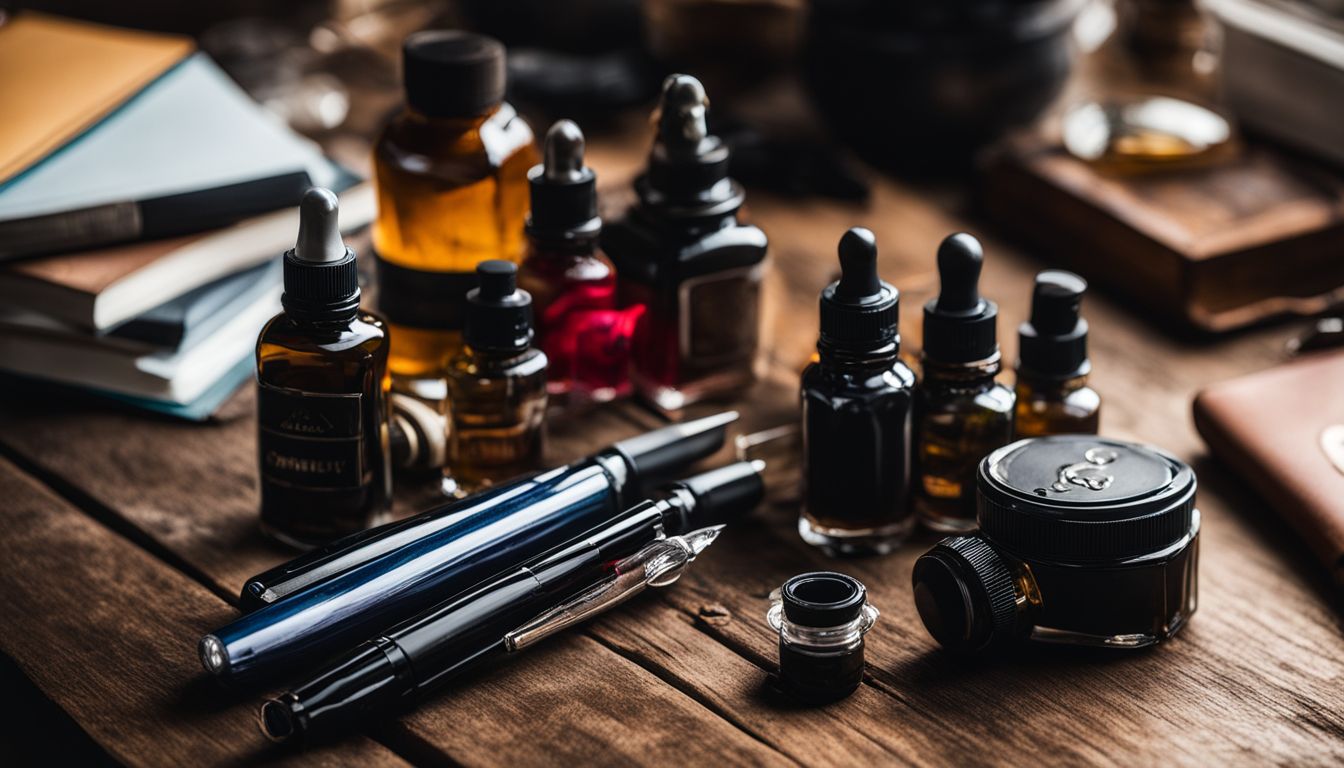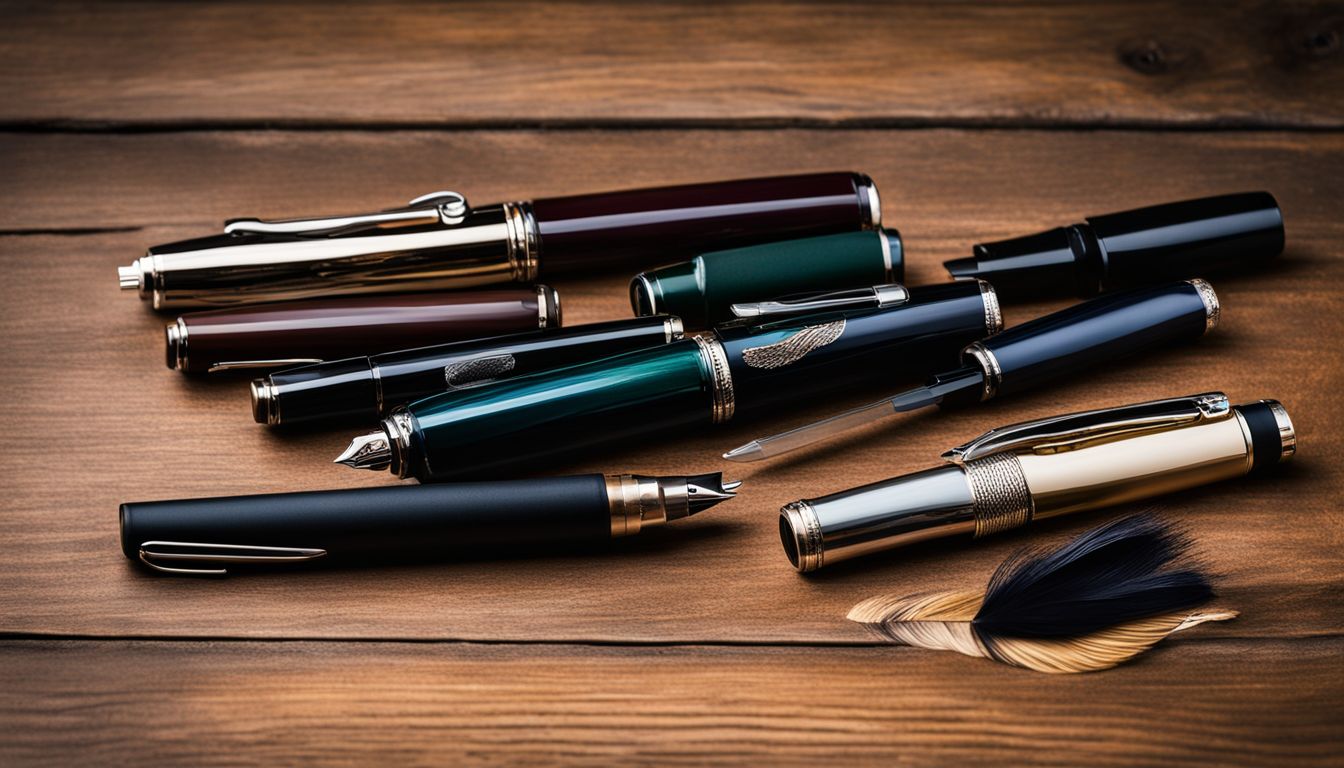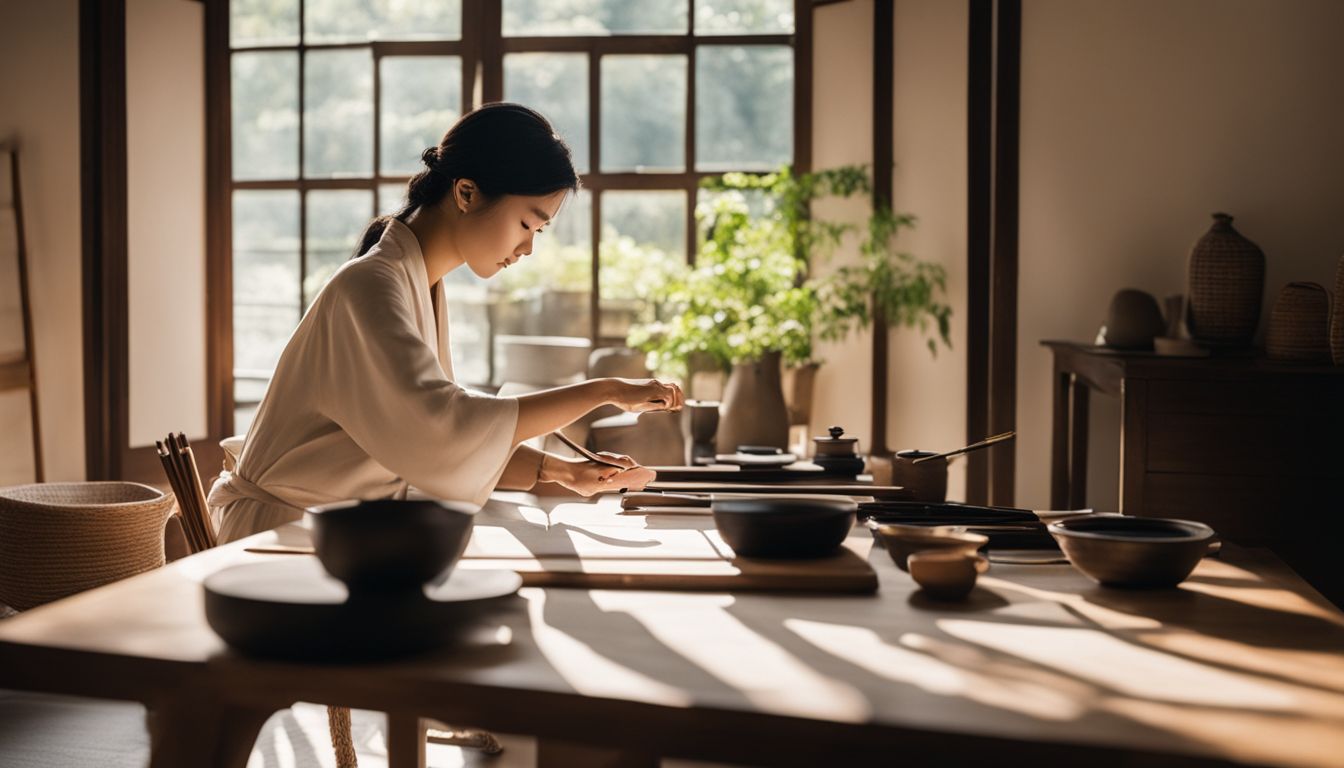Having trouble with your fountain pen feeds? It’s not uncommon for enthusiasts to search high and low for the perfect fit. This article will guide you through identifying suitable replacement feeds to enhance your writing experience — ensuring smooth ink flow and optimal performance.
Let’s get started, and find that ideal feed match!
Key Takeaways
- Match your replacement feed to your fountain pen to avoid ink flow problems or nib damage. Check for brand and model matches like Lamy-specific feeds.
- Fountain pen nibs can get smoother as you use them, just like how shoes become more comfortable with wear. Take care not to press too hard or drop the pen.
- You can find good replacements priced from $21.00 to $42.00 that offer money – back guarantees and warranties, but special Zebra G nibs require different sources.
- Replacing a feed involves unscrewing the barrel, removing the old feed and nib, comparing it with the new one for fit, aligning it with your nib, then carefully reassembling.
- Always handle parts gently when replacing feeds and stop if there’s resistance to prevent damaging your fountain pen.
Identifying the Right Replacement Feeds for Your Fountain Pen Nibs

Discovering the perfect match for your fountain pen’s heart – the feed – is a quest that requires a keen understanding of its unique needs and characteristics. It’s about finding that companion piece that will bring out the true character of your beloved pen nibs; compatibility is key, as each feed influences the ink flow and overall writing experience differently.
Understanding the compatibility with your fountain pen nibs
Replacement feeds need to match your fountain pen nibs perfectly. If they don’t, ink might not flow right or the nib could get damaged. Most pens work with the feeds they come with, but some special nibs like steel flex or Zebra G require different feeds.
Check if a feed fits your brand and model before you buy it. Lamy, for example, has specific feeds for their pens.
Choosing the right feed means looking at size and shape too. Feeds are not one-size-fits-all; each pen model might need a unique feed design to work well. You can find standard replacement feeds in shops or online product pages.
Remember, these new feeds don’t come with a nib attached – you use them with the original nib from your pen unless you’re using those exceptional steel flex nibs or Zebra G types.
Do Fountain Pen Nibs Get Smoother With Use?
Once you understand which replacement feeds fit your pen, you might wonder about the nib’s performance over time. Fountain pen nibs can indeed become smoother with use. As you write, the tip of the nib adjusts to your writing style.
The pressure and angle of how you hold the pen shape the nib’s metal. This means it will glide more easily across paper after some regular use.
It’s like breaking in a new pair of shoes – at first, they might feel stiff, but they get more comfortable as they conform to your feet. With fountain pens, tiny imperfections on the surface of a new nib can wear away through normal use.
This creates a custom writing experience that feels better with each word you write. Keep in mind that proper care is crucial; if you press too hard or drop your pen often, it could damage rather than smooth out the nib.
Reviewing the Top Replacement Fountain Pen Feeds

Our list details the best replacement fountain pen feeds out there. You’ll find part numbers and descriptions that make choosing easy. Prices range from $21.00 to $42.00, fitting most budgets.
Check model compatibility carefully; these feeds fit Parker, Lamy, and Laban pens nicely.
Every feed comes with a 30-day money-back guarantee and a one-year warranty—except for Zebra G nibs. These special nibs need different sources online for replacements. With ten options in various materials, finding your perfect match is simple.
Whether you need steel flex or prefer another type, we’ve got you covered!
How to Replace Your Fountain Pen Feeds
After learning about the best replacement feeds, it’s time to understand how you can switch out your fountain pen feeds. Replacing a feed is not as hard as it sounds. Here’s a step-by-step guide:
- First, carefully unscrew the barrel of your fountain pen to access the nib and feed. Make sure not to force any parts.
- Gently slide out the current feed and nib from the grip section. Some pens may need a slight twist while pulling.
- Once removed, compare the old feed with your new replacement feed. Check for size and fit compatibility.
- It’s crucial to align the new feed correctly with your nib before insertion. They should match up at the base where they contact each other.
- Slowly insert the aligned nib and feed back into the grip section of your pen. Use consistent, gentle pressure.
- Ensure both pieces are securely in place by gently pressing them until they stop moving further into the section.
- Screw the barrel back onto your pen’s body once you’re certain everything is fitted properly.
Conclusion
Finding the perfect fountain pen feed matters a lot. Your writing can truly shine with the right match. Remember, a smooth ink flow depends on quality feeds. Our nibs deserve the best for top performance.
Choose wisely, write happily!
Discover whether fountain pen nibs get smoother with use in our detailed article.
FAQs
1. What should I consider when choosing replacement fountain pen nibs?
When looking for replacement fountain pen nibs, it’s essential to match the size and shape of your original nib. Also, think about the writing experience you prefer—smooth or with feedback? Each choice affects how your pen will glide on paper.
2. Can any feed fit my fountain pen, or is it specific to each model?
Usually, feeds are designed to fit specific models because they need to align perfectly with the nib and ink flow system. It’s wise to check compatibility before you make a purchase; otherwise, you might end up with one that doesn’t quite work.
3. Where can I find reliable information on compatible replacement nibs and feeds for my fountain pen?
Good places include brand websites, forums where pen enthusiasts gather, and sometimes even videos from users who share their experiences online! They all offer valuable insights into which replacements will suit your pen best.
4. If I want a different writing feel from my fountain pen, what type of replacement nib should I get?
Want something different? Look at various types of nib materials like gold or stainless steel—you’ll notice differences in flexibility and line variation that can really change up your writing style! Remember also to match the feed correctly for an ideal ink flow.




Leave a Reply
You must be logged in to post a comment.